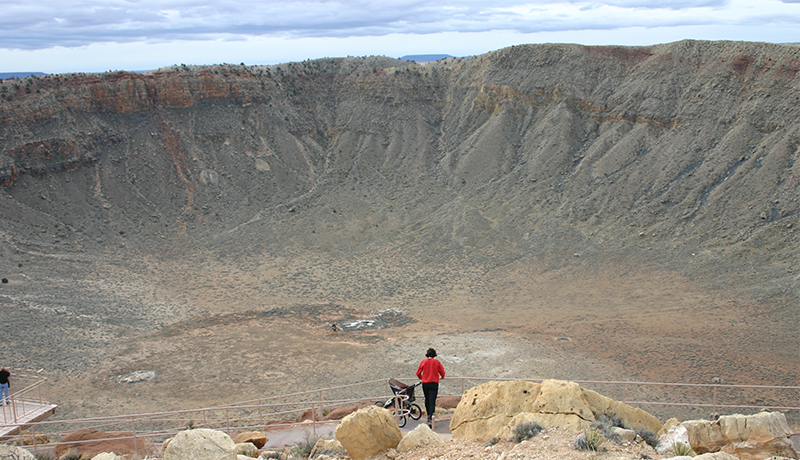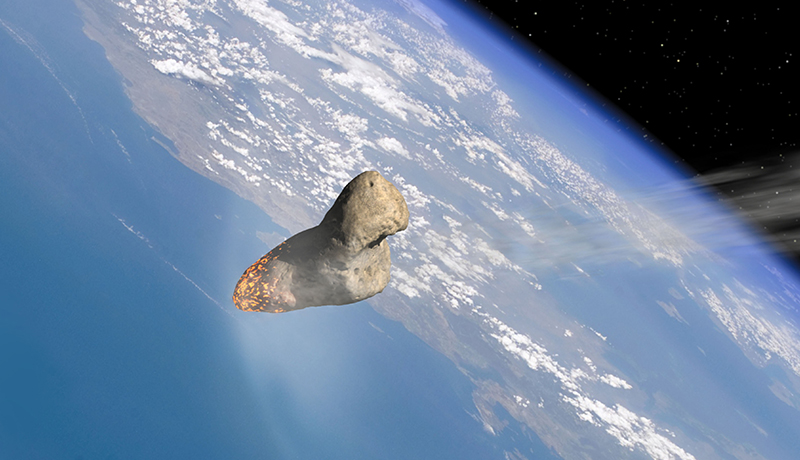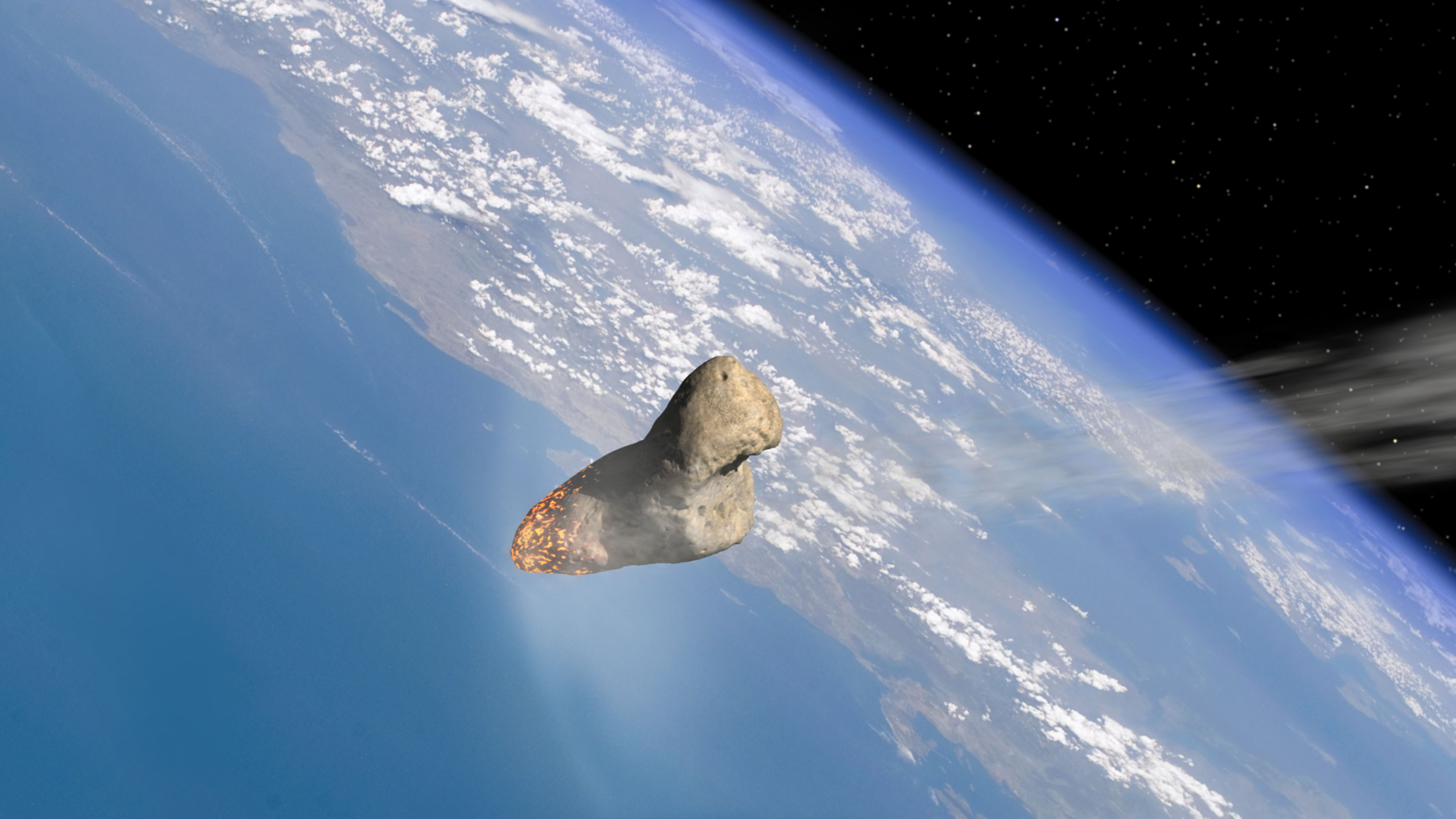One of the major problems that civilisation has is that while we are becoming incredibly efficient at spotting Near-Earth Objects, we still cannot do anything about one that might be on a collision path with the Earth.
 Meteor Crater located in Arizona is thought to have been created approximately 50,000 years ago
Meteor Crater located in Arizona is thought to have been created approximately 50,000 years ago
Monitoring threats
The 50,000 tonnes of space material that hits Earth each year falls mainly as dust grains less than half a millimetre across.
 An asteroid in orbit around Earth
An asteroid in orbit around Earth



Rate and Review
Rate this article
Review this article
Log into OpenLearn to leave reviews and join in the conversation.
Article reviews
T THERE- EXITING FOR ALL OF US